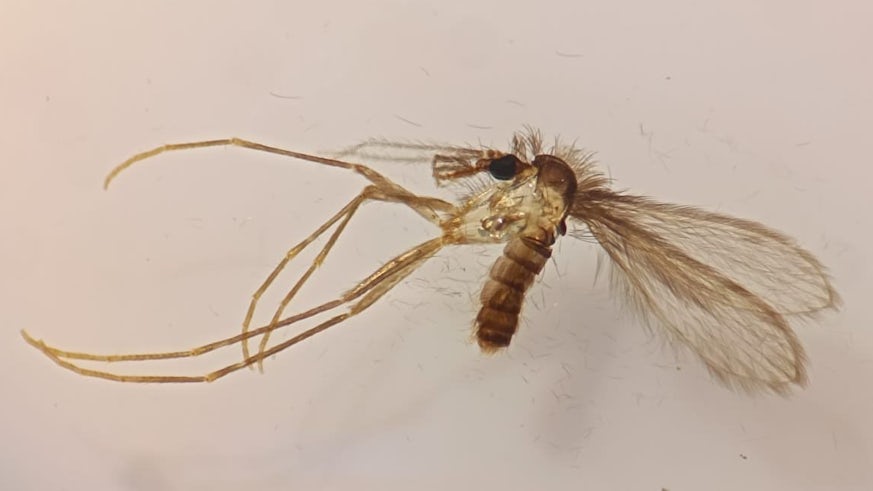Breakthrough research sets trap for potentially deadly sandfly
11 April 2024

Scientists have discovered the enzyme that a sandfly species uses in its pheromone(s) to attract mates, which could lead to targeted traps and reduce the spread of a potentially fatal disease.
Cardiff and Nottingham researchers have identified the specific enzyme that the Lutzomyia longipalpis species of sandfly uses to attract mates – a discovery that could lead to the development of commercial trapping systems to target and control it.
Through genome analysis of Lutzomyia longipalpis, the team discovered that the enzyme, called terpene synthase, is responsible for making the terpene pheromone sobralene, which male sandflies use to lure females and other males to mating sites.
Professor John Pickett FRS, Head of the School of Chemistry at Cardiff University, led the work which chemically characterised the pheromones of the sandfly for the first time, making the link to the enzyme possible.
Professor Pickett said: “Together with Chemistry at Nottingham and colleagues from Brazil we represent a powerful consortium in identifying and exploiting chemo-enzymatic routes to commercial production of pheromones of the insect vectors of human pathogens - in this example, the new-world sandfly vectors of the pathogens causing extremely debilitating forms of leishmaniasis”.
The sandfly species, native to Brazil and South America, is the major carrier of the disease leishmaniasis, which causes skin ulcers and lesions in its least severe form and is almost always fatal in its most serious form. According to the World Health Organisation, leishmaniasis affects some of the world’s poorest people.
Professor Neil Oldham, Nottingham School of Chemistry, said: “Finding this enzyme has been very difficult and we have been hunting for it for over two years. The Lutzomyia genome contains an unusually high number of candidate terpene synthase genes, but thanks to the persistence of Dr Charlie Ducker, a talented researcher on the team, we were able to find the one that makes the pheromone”.
The major advantage of using pheromones for insect population control is that they are very specific to particular species and, in this case, specific even to the pest in this region of Brazil.
Terpenes are widely used in nature for chemical communication, but understanding of how these structurally diverse natural products are produced by insects is only now beginning to emerge.
The Cardiff team now have the opportunity to produce and scale the precursor to the sobralene pheromone (geranylgeranyl pyrophosphate (diphosphate)) for an affordable “attract and kill” approach for this vector of a major debilitating human pathogen.
The study “A diterpene synthase from the sandfly Lutzomyia longipalpis produces the pheromone sobralene” is published in the leading journal, Proceedings of the National Academy of Sciences (PNAS).



